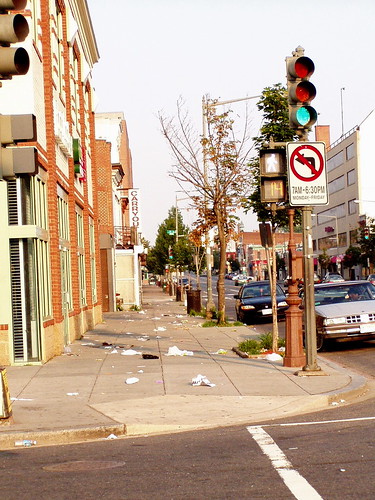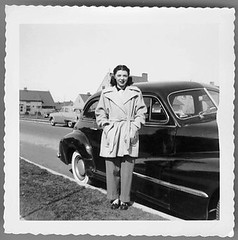History and our community as old and dingy and tired

In the online transcript on the Post website about development in Southeast from earlier in the week, I found one of the comments troubling:
Ms. Dupree, I'm a big fan of your website. Thanks for taking the time here with us. Why do you think revitalization efforts in Near Southeast have been so successful? Even before the stadium plans appeared, Near Southeast was well on its way to rebounding. What has made it so successful, while other neighborhoods also targeted for revitalization, such as Historic Anacostia or Brookland, continue to languish. What was the "tipping point," if any, for this area? Thanks
First I like the website too(!), but it's arguable that the Southeast revitalization efforts will be successful, or at least as successful as they could be, or will have better results than Brookland. (Anacostia is another story, that I have written about.)
Right now the development direction for M Street SE is office ghetto, not much different than K Street NW, and equally "vibrant" at night. Think ghost town. Mixed use development is necessary in big doses in order to begin creating a place or a district, rather than another collection of office buildings inhabitated during the day by suburbanites eager to leave the city as soon as they can leave the office.
But I digress.
I think that Brookland is a far different neighborhood from Historic Anacostia, and I have a hard time seeing it as a languishing neighborhood. It's relatively stable and has low crime, it has few vacant properties, etc.
 Newton Theater, currently a CVS drug store, on 12th Street NE, Brookland, Washington, DC. Photo by James Nelson, intern at the Brookland Community Development Corporation.
Newton Theater, currently a CVS drug store, on 12th Street NE, Brookland, Washington, DC. Photo by James Nelson, intern at the Brookland Community Development Corporation.The Newton Theater is a site with great potential--I think that Catholic University, Trinity College, and the Brookland CDC need to work together to make this space a multipurpose cultural place for music and theater performances from the colleges, as well as the community, for movie programs and other events. See this article from Gotham Gazette, about the restoration of a theater on Staten Island for a model of what could happen.
Granted there could be more commercial options along 12th Street, and there are other opportunities as well, plus the streets aren't managed quite like a mall but the residential building stock is incredible as are many of the residents (despite the recent blow up over historic preservation efforts which I think reflect people's fear of change, which they are ascribing to historic preservation rather than to broader economic trends that have nothing to do with historic preservation--after all, the neighborhood isn't a historic district, and housing prices have skyrocketed nonetheless).
Similarly, a short piece in the Post Home Section a few weeks ago discussed the new home store Dwellings and described the street thusly: "Dwellings, a gifts and home furnishings store that opened in April, is a bright spot sharing a stretch of sidewalk with businesses that appear closed or rundown. "
Or I still remember conversations with people in my neighborhood who tell me that the execrable building at 721-727 H Street NE looks good.
 721-727 H Street NE. Photo by Elise Bernard.
721-727 H Street NE. Photo by Elise Bernard.I think that since our society so reveres the new, there is a big chunk of people who have a tough time appreciating the old and historic. It doesn't help that the average person knows little about architecture and history.
While I was writing this it occurred to me that "manifest destiny" around the "acquisition and control" of the lands that are now the Western United States was merely the earliest form of the "American Dream," which is now about suburban and exurban living.
 American Dream, Levittown Pennsylvania, early 1950s. Photographs from the Tekula Family.
American Dream, Levittown Pennsylvania, early 1950s. Photographs from the Tekula Family.



0 Comments:
Post a Comment
<< Home